Introduction to Kruger National Park
Welcome to Kruger National Park, the largest wildlife sanctuary in Africa and the oldest in South Africa. The Greater Kruger National Park, which includes private reserves like Sabi Sands, Timbavati, Manyeleti, Balule, Kapama, Thornybush, and others, stretches over 2 million hectares. This vast wilderness is home to 150 mammal species, over 500 bird species, and around 100 reptile species, ensuring an unforgettable safari adventure!

Additionally, Kruger National Park is part of a Peace Park, which includes Gonarezhou National Park in Zimbabwe and Limpopo National Park in Mozambique. This ambitious project involved removing fences between South Africa, Mozambique, and Zimbabwe, resulting in a massive, unbroken wilderness where wildlife can roam freely. This initiative has not only protected vital animal migration routes but also enhanced tourism, inviting thousands of wildlife lovers to explore some of Africa’s most stunning natural landscapes!
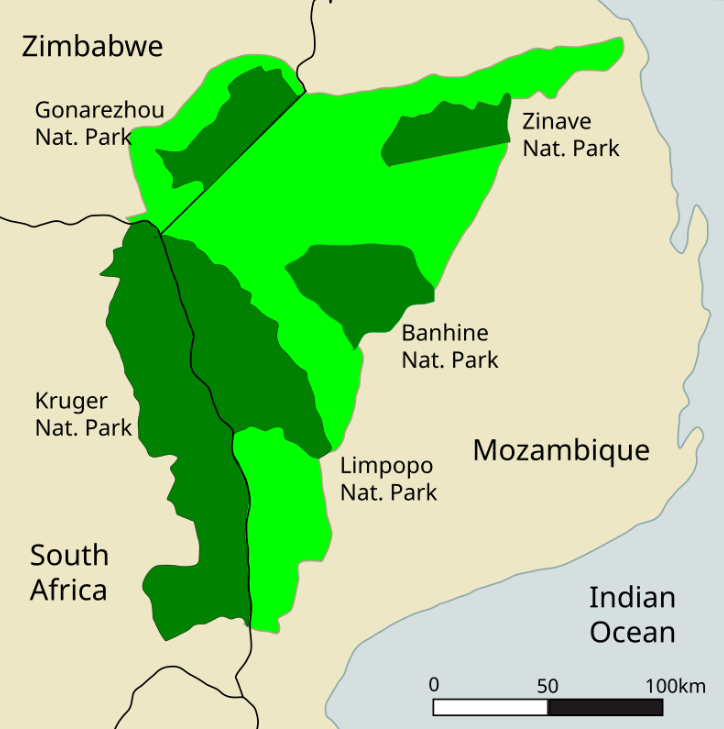
In this blog, we are shining a spotlight on Africa’s lesser-known Little Five! While the Big Five often steal the show, the Little Five are just as fascinating and worthy of attention. These smaller, yet equally captivating creatures bring their own charm and intrigue to the African wilderness. Join us as we delve into the lives of these remarkable animals, discovering the unique roles they play in their ecosystems.
Ant Lion
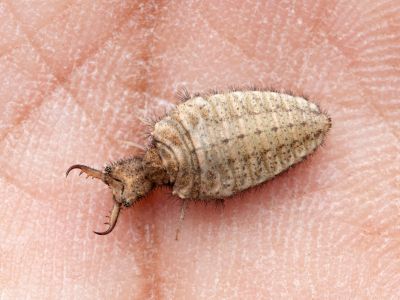
Ant lions, also known as doodlebugs, refer to various insect species typically found in dry tropical regions. These fascinating creatures have powerful jaws, which they use to catch their prey. The ant lion does not hunt ants or other insects. Instead, it builds underground traps in the sand and hides underground, waiting for an insect to fall into the trap. When an ant or other small insect nears the trap, the doodlebug uses its large head to fling sand upward and out of the hole. The disoriented ant then falls into the hole, where the ant lion catches it with its strong jaws.
After consuming enough ants, the doodlebug spins a cocoon around itself. Inside the cocoon, it undergoes metamorphosis and emerges as a beautiful insect like a damselfly, with four long, slender, delicate wings. The adult fly lays eggs in the sand, which hatch into larvae. These ant lion larvae are beneficial as they prey on other insects, many of which are harmful to crops.
Watch this fascinating video showcasing the incredibly smart techniques used by ant lions to catch their prey. Click here!
Elephant Shrew
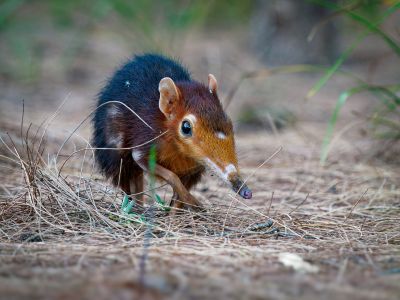
Elephant shrews, also known as jumping shrews or sengis, are small insect-eating mammals that are native to Africa. They spend most of their time foraging for food and play a major role in keeping insect populations in check. Despite being mostly active during the day and highly energetic, elephant shrews are elusive and rarely spotted. They are cautious, well-camouflaged, and skilled at quickly escaping from potential dangers.
The name “elephant shrew” originates from their long noses, which resemble an elephant’s trunk. Additionally, phylogenetic studies have shown that elephant shrews are more closely related to elephants than to true shrews!
Elephant shrews are generally solitary creatures, even though many species form monogamous pairs. These pairs share and fiercely protect their territory, marking it with their scent glands. Scent markings also play a role in attracting mates.
There are 19 species of elephant shrews in Africa. They inhabit several different types of habitats and only one of them, namely the Golden Rumped elephant shrew, is endangered.
Watch this exciting video shedding light into the world of the rufous elephant shrew. Click here!
Leopard tortoise
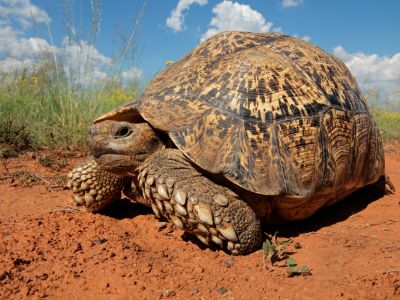
The leopard tortoise, the fourth largest tortoise in the world, is easy to spot and can be found in semiarid and thorny habitats, though it prefers grasslands. This tortoise munches on mixed grasses, succulents, and thistles, and even treats itself to fruits when available. As a natural seed spreader, it helps plants grow by passing undigested seeds through its system. Interestingly, it also known to feed on hyena droppings to get the calcium for strong bones and sturdy eggshells!
This widespread tortoise in sub-Saharan Africa reaches sexual maturity between 12 and 15 years old, can live up to 80 to 100 years. Sadly, it is now often bred in captivity for the pet trade. Although not considered threatened, they face growing pressure from habitat loss and have historically been exploited for the pet trade and hunted for food. Despite captive breeding efforts, many are still taken from the wild to be sold as pets.
Watch how a tortoise defends itself! Click here!
Buffalo Weaver
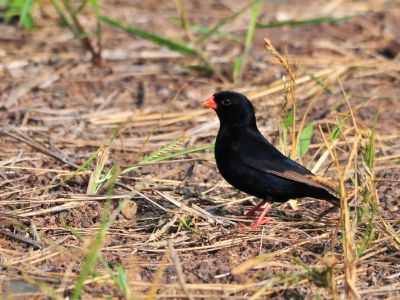
The buffalo weaver family includes several fascinating species, each with its own quirks and traits. For the sake of convenience, here we mention only the red-billed buffalo weaver.
These unique birds thrive in dry savannahs and open woodlands but have a surprising preference for areas often disrupted by humans and livestock. In fact, if people move away from a spot where these birds are living, the birds tend to follow. As urban areas expand, these adaptable weavers find new places to settle.
Like other weavers, buffalo weavers are famous for their impressive nest-building abilities. They create large, somewhat messy nests from twigs and grass. What is truly remarkable is that these nests act as multi-chambered homes for several families. By living in colonies, these birds can efficiently share resources and protect themselves from predators.
You will often find buffalo weavers in small family groups or larger flocks. Male buffalo weavers are usually polygamous, managing between one and eight nest chambers, each housing up to three females. A dominant male typically oversees the most chambers and females, while lower-ranking males have fewer.
Rhino Beetle
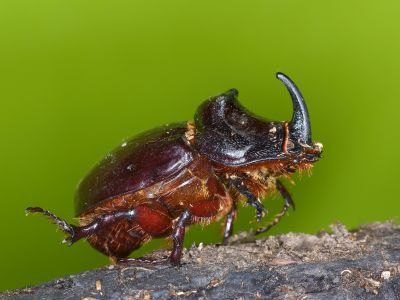
The rhinoceros beetle, an intriguing herbivorous insect, gets its name from the distinctive horn-like projections found on the males’ heads. These beetles, especially those found in the rainforests of South and Central America, are sometimes referred to as Hercules beetles. This nickname is fitting, as they exhibit a strength of Herculean proportions, capable of lifting objects 30 times their own weight without losing any speed. That is the equivalent of a human effortlessly carrying an adult male white rhinoceros!
Known for their impressive size, rhinoceros beetles hold the title of the longest extant beetle species in the world. Their large, robust bodies and horned heads make them easily recognizable and fascinating to observe. These beetles are not only the longest but also rank among the largest flying insects, showcasing their remarkable adaptability and evolutionary success.
Adding to their allure, rhinoceros beetles are also known for their incredible strength and versatility. These fascinating insects play a crucial role in their ecosystems by feeding on decaying plant matter and helping to recycle nutrients. Their sheer power, combined with their significant ecological contributions, makes the rhinoceros beetle a true marvel of the insect world.
Conclusion
The Big Five—elephants, lions, buffaloes, leopards, and rhinoceroses—are the iconic giants of the African safari, embodying the thrill and majesty of the wild. These magnificent animals have fascinated people worldwide and are a major draw for safari enthusiasts.
On the other hand, the Little Five offer their own unique charm and insight into Africa’s vibrant ecosystem. While often overshadowed by their larger counterparts, these little creatures reveal the intricate and equally captivating details of African wildlife.
In celebrating Africa’s Little Five, we uncover a world of wonder that often goes unnoticed. These remarkable creatures—the ant lion, elephant shrew, leopard tortoise, buffalo weaver, and rhinoceros beetle—bring their own magic to the safari experience. Each plays a crucial role in their environment, showcasing the diversity and complexity of life on the continent. Embracing the Little Five allows us to appreciate the full spectrum of Africa’s wildlife, reminding us that every creature, big or small, contributes to the rich tapestry of the natural world!